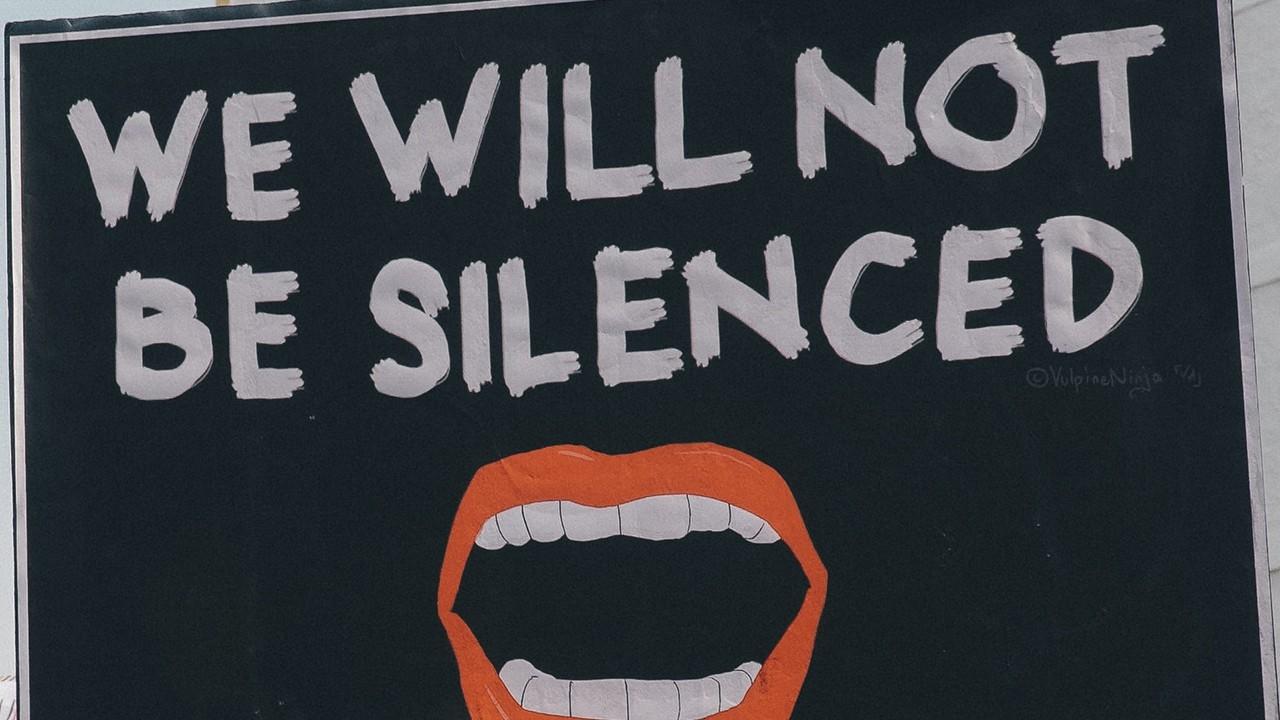How you react to initial abuse could help you ward off an abuser

Grooming is the behavior used by an abuser to figure out if he'll be able to abuse a target. Think of grooming as testing the waters to see how you'll react. If you pass his grooming test, the abuser will know he can start and maintain the abuse dynamic.
UK psychologist Aryanne Oade coaches clients on how to recover from workplace abuse. She believes that anyone can be groomed, from the assertive to those who don't like conflict to those who don't have the tools to stand up for themselves. But she also believes that assertive behavior may ward off an abuser. In her article "Grooming in the workplace: How to identify and handle incidents of bullying," Oade addresses workplace grooming dynamics and how to respond effectively if you find yourself the target of grooming.
Workplace grooming dynamics
Abusers use grooming (ranging from subtle and confusing to direct) to figure out how you'll respond (confidently, uncomfortably, or somewhere in between) and the degree to which you'll send bac...
Unrealistic responses to targets of workplace abuse

We've all read comments on online workplace abuse articles telling targets to just get a tough skin or a new job — that life is just hard, and abuse on the job is just another problem that we have to deal with.
Experts compare workplace abuse with domestic violence. In the recent past, it was perfectly legal for a husband to beat his wife. Imagine telling a wife to "just leave" or to "toughen up" as her self-esteem worsens but yet she needs to rebuild her life. Doesn't sound simple, does it?
A target of workplace abuse faces a similar problem. As abusers encourage targets who care about their work and organizations to question their abilities, targets feel beaten down and lose confidence to find another job. Even if they do have the strength to find another job, they generally need months to find other work — and endure more abuse during those months. Only those with safety nets (enough savings to cover months of living expenses, a second income through a side hustle or spouse, or a ...
The singlemost important thing to remember in trying to end workplace abuse

Those of us who experienced workplace abuse firsthand remember a specific period of time: the window of time after the abuse pattern started when we felt most isolated and before we knew the term "workplace abuse."
Think about that time for a moment.
Remember when you discovered the term. You may have searched online for help and stumbled into the term. You may have read what workplace abuse is and what its effects are on your health. You may even remember exactly where you were when you found the term.
You suddenly felt less alone. You suddenly felt as though you weren't crazy, you weren't imagining what was happening to you, and you were and should have been just as shocked by your experience as your friends and family when you described it to them.
There are thousands of people out there just like you who feel isolated today — people who have no idea that what's happening to them at work isn't their fault. These are the people who would join our base of supporters and champion l...
What we can do to disrupt social hierarchies at work

Plaintiffs, courts, and employers tend to not see discrimination as a systemic problem, say the authors of Rights on Trial. Courts and employers tend to address discrimination individually. The result: a general commitment to the ideals of civil rights while delegitimizing workers claims and blaming victims — with a diluting of law, undermining of rights, and reproduction of hierarchy. Discrimination law is not intended to disrupt the authority of the managers in running the employer organization, which are overwhelmingly managed by the traditionally advantage social group in American society: white men.
Frivolous claims are a myth. While implicit bias is the more common form of discrimination, most instances of reported discrimination were not subtle. Still, the vast majority of potential grievants do not file with the EEOC or in federal court. “Only one in 100 potential African-American grievants filed a charge with the EEOC, and 13 in 10,000 potential African-American grievants fil...
It's a movement to end workplace abuse

At one point in time, it was normal for women not to vote. But advocacy changed the common way of thinking. It wasn't just a change of law. It was a movement.
While we want workplace abuse legislation passed, we’re also changing the common way of thinking about employees — that employees' mental well-being matters. We're not just saying that a bill needs to pass. We’re moving the needle, each one of us, one by one, to say that mental health matters at work. We’ll look back on this movement and think how absurd it is that workplace abuse is allowed — just as we think not allowing women to vote was absurd.
The vision
Imagine workplaces based on mutual respect, places where people can contribute and feel valued and important, where workplace abuse isn't acceptable, but growth and support are. How do we get there? What might the roadmap look like?
Let's take a look at other social ills: murder, rape, domestic violence. At first we deemed these problems to be problems, then made them ille...
Stereotypes determine who has power — and how employers keep others out of it

Employers deny discrimination, assert managerial prerogatives, individualize problems, and denigrate plaintiffs. They offer small monetary awards, isolate disputes from the workplace by refusing to reinstate employees, and require that plaintiffs sign confidentiality agreements with settlements. Courts legitimize these practices, ignoring the asymmetry of power in the workplace and in litigation.
And workplace abuse is too often aimed at those who are off the norm of white, heterosexual, Christian, cisgender male.
Employers, lawyers, and courts fail to challenge — and even reinforce — hierarchies through stereotypes, say the authors of Rights on Trial. Stereotypes fuel discrimination against those who have been negatively stereotyped in favor of those who are positively typed. They’re cultural constructs about social reality used to justify asymmetrical social relations. They influence whether people get jobs, advance, support themselves financially, and achieve career goals. For exa...
Why great employees leave

What do employees want? Their answer might be the secret to keeping the best ones around, says CNNMoney's Anne Fisher in Mary David's post "Here's Why Good Employees Quit."
David whittles the list of why employees quit — from work/life balance and conflict to micro-management and lack of communication — down to four top reasons why the best go packing and jeopardize company sustainability:
1. Poor reward system. It starts with a decent paycheck, but extends into recognition: additional vacation time, extra responsibility, a promotion, a pay raise, or a bonus. When employers find out what each employee values, they can help improve rewards on an individual basis.
2. Management. Employees need recognition and rewards from upper management — not just middle management — to stay happy and loyal. Good managers on both levels need skills at managing processes and motivating people.
3. Hiring/promotions. When good workers work harder than people who get promoted sooner than they do, they'...
What is justice for targets of discrimination?

In the vast majority of employment civil rights cases, law leaves untouched the hierarchies and the alleged injustices that gave rise to employment civil rights litigation in the first place. Regardless, because satisfaction with outcome doesn’t necessarily equate to winning, there’s difficulty in defining what’s a win or a loss according to Rights on Trial:
Plaintiffs often get little or nothing of value — and suffer. Lawsuits can take a toll on plaintiffs: loss of their jobs (including structure and meaning) and identities, financial insecurity (including bankruptcy), toll on families (including divorce), mistrust, alcoholism and drug abuse, depression, and doctor bills — even if they win the case. Many plaintiffs simply want to be reinstated in their jobs, not large sum of money nor a verdict of guilt for the employer by the court. Other times, small settlements satisfy plaintiffs because plaintiffs have a chance to tell their stories. Winning might mean recovering an amount of mon...
How forces keep the best employees down

Two common effects keep the best workers from climbing as high in the corporate ladder as their often less competent colleagues:
High ethics and competence vs. low ethics and competence
Quite often, a subordinate with high competence and high ethics will report to a supervisor with low competence and low ethics. The subordinate may pose a threat to the often insecure supervisor. The best employees often do not rise to the top. Maneuvering and playing the kiss up political game most often get employee promoted rather than their accomplishments and work ethics.
The Dunning-Kruger effect
The Dunning-Kruger effect says that incompetent people overrate themselves, and competent people overrate others. According to Wikipedia, "the Dunning–Kruger effect is a cognitive bias in which unskilled individuals suffer from illusory superiority, mistakenly rating their ability much higher than average.... Actual competence may weaken self-confidence, as competent individuals may falsely assume that ot...
Employers' support of rights — but not employees advocating for them

Adversarialism and opposing views — rather than addressing potential discrimination — informs each side’s actions and perceptions in a legal case. According to Rights on Trial, plaintiffs see themselves as the little guy in a litigation system stacked against them with adversaries who believe discrimination exists — just not in their cases:
Defendants who insist they abide by the law yet find flaws with every individual case by using stereotypes. They become defensive and can escalate tensions with abusive legal tactics such as using summary judgment motion to tell plaintiffs they have 45-day time limit to take depositions, etc.. Inundated with other cases, plaintiff lawyers often push for an early settlements to get rid of the case, giving no attention to the merits of the case fro either side as they jockey for position.
Judges who often don’t see discrimination evidently in cases without smoking gun evidence and play a role not just in decisions but in reaching them by supporting ...
